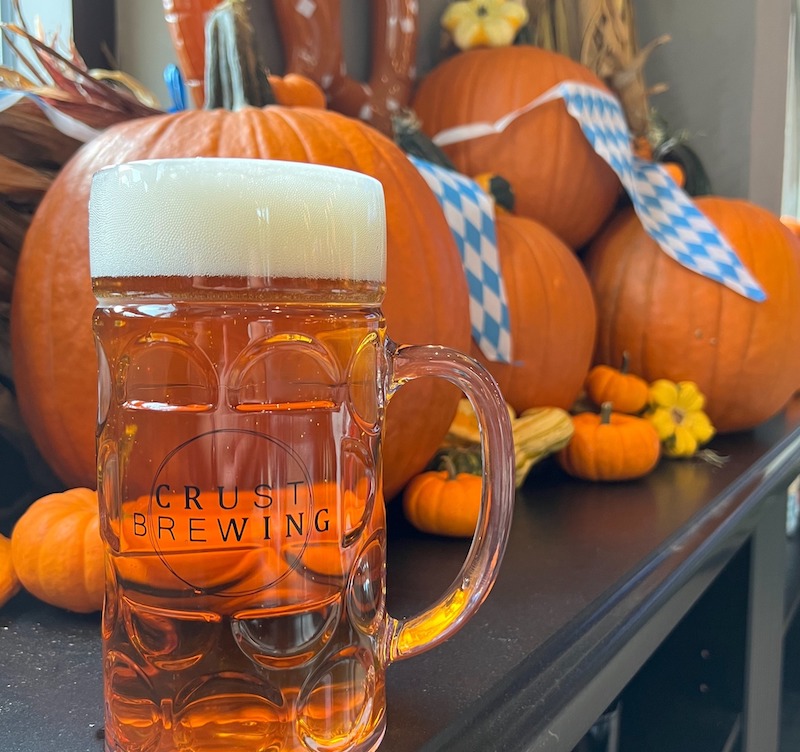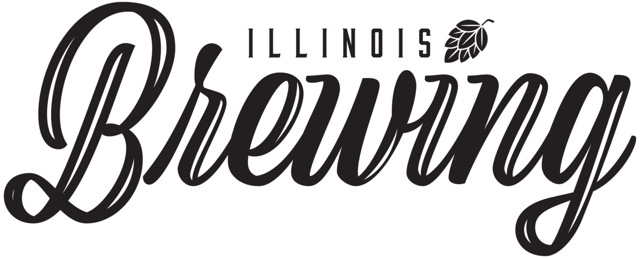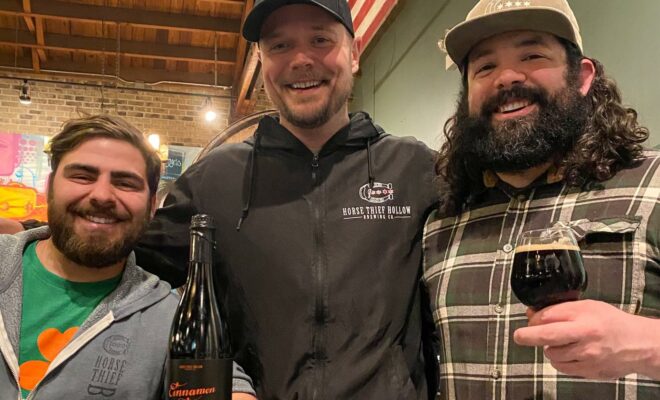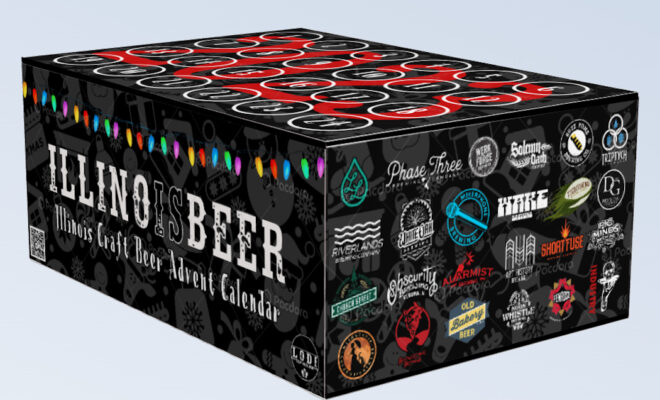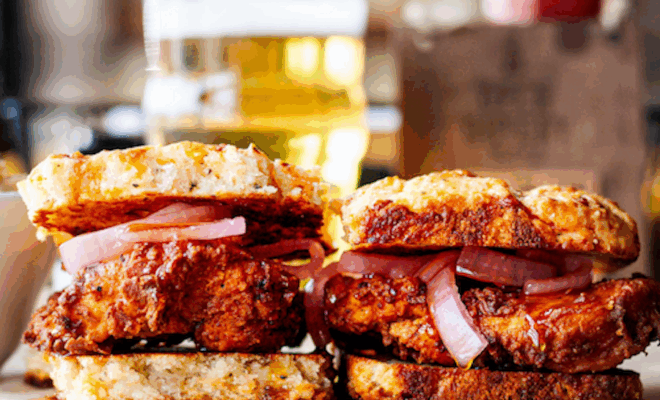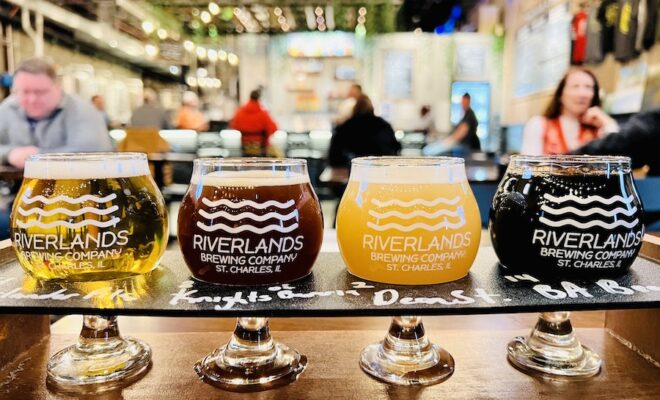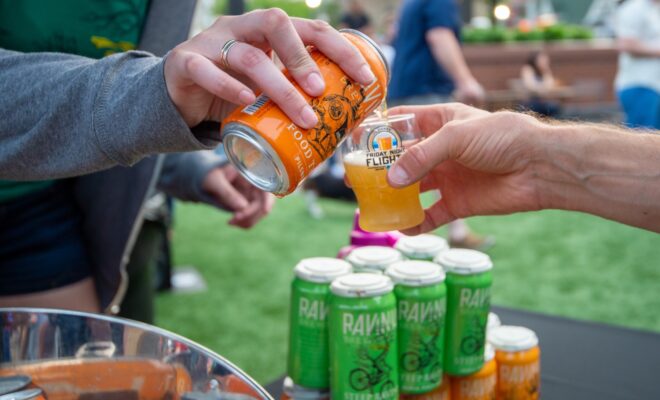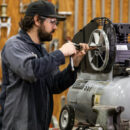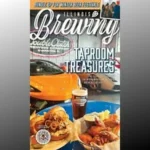Q&A with Rob Hunter: We sat down with Crust Brewing’s head brewer to discuss his brewing background, a history of Oktoberfest beer, and getting things rolling in Rosemont
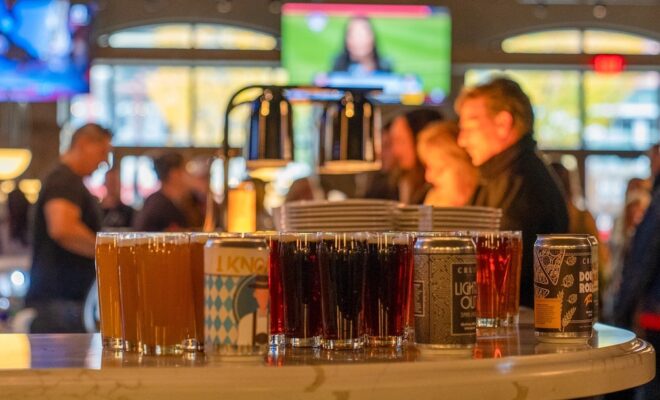
The following Q&A is part of our special digital Oktoberfest issue of Illinois Brewing, with tons of added seasonal content and events. Check it out here.
By Trent Modglin
Crust Brewing
5500 Park Place in Rosemont’s Parkway Bank Bark
630-653-5500
CrustBrewing.com
Q: When did you develop a love of beer? Was there a specific memory you have when you knew it was what you wanted to do?
A: I grew up in Arkansas, and my dad drank beer. And like most young men, I wanted to be like my dad. But unlike most people at a young age, I thought it tasted good when I would sneak a sip from him. I thought, ‘If this is what beer tastes like, sweet, I like it.’
Things really took off when I was in the Air Force and we took a trip over to Germany. During a tour, we got out of our uniforms and were able to explore the beer atmosphere and it was fantastic. Being able to try beers that weren’t made in Milwaukee or St. Louis, that actually had flavor and color and variety (laughs). Cloudy wheat beers, pale beer with hops, dark lagers. This was a variety I hadn’t seen or imagined. To make matters worse — or better, actually — a guy I was friends with in the Air Force had family in Belgium, so we were able to spend some time there too. And that was mind blowing. That was it for me.
Things really took off when I took a trip over to Germany. Being able to try beers that weren’t made in Milwaukee or St. Louis, that actually had flavor and color and variety (laughs). Cloudy wheat beers, pale beer with hops, dark lagers. This was a variety I hadn’t seen or imagined.
When I got out of the Air Force and went back home to go to college in Arkansas, there still was zero craft brewing. I started home brewing to try to copy what I has seen Germany — to mixed success (laughs). I’m stealing this line from someone, but “I’m not a beer geek… I’m a brewery geek.” I was just enthused that you could actually make your own beer, and when I started learning about the ingredients and the process, I was fascinated.
I moved to Nashville after college, had a job fall through and a newly minted psychology degree that wasn’t nearly as valuable as I thought it would be. One day I was having beers with my landlord, and he told me I needed some focus and it was then, while I was taking a big long pull off one of the local beers, that I thought about making a living doing this. We turned the empty can upside down and called the number of the brewery that was at the bottom — Bohannon Brewing Company — and it turns out they were willing to give an enthusiastic kid, with just enough knowledge to be dangerous, his start. And that’s how it all began.
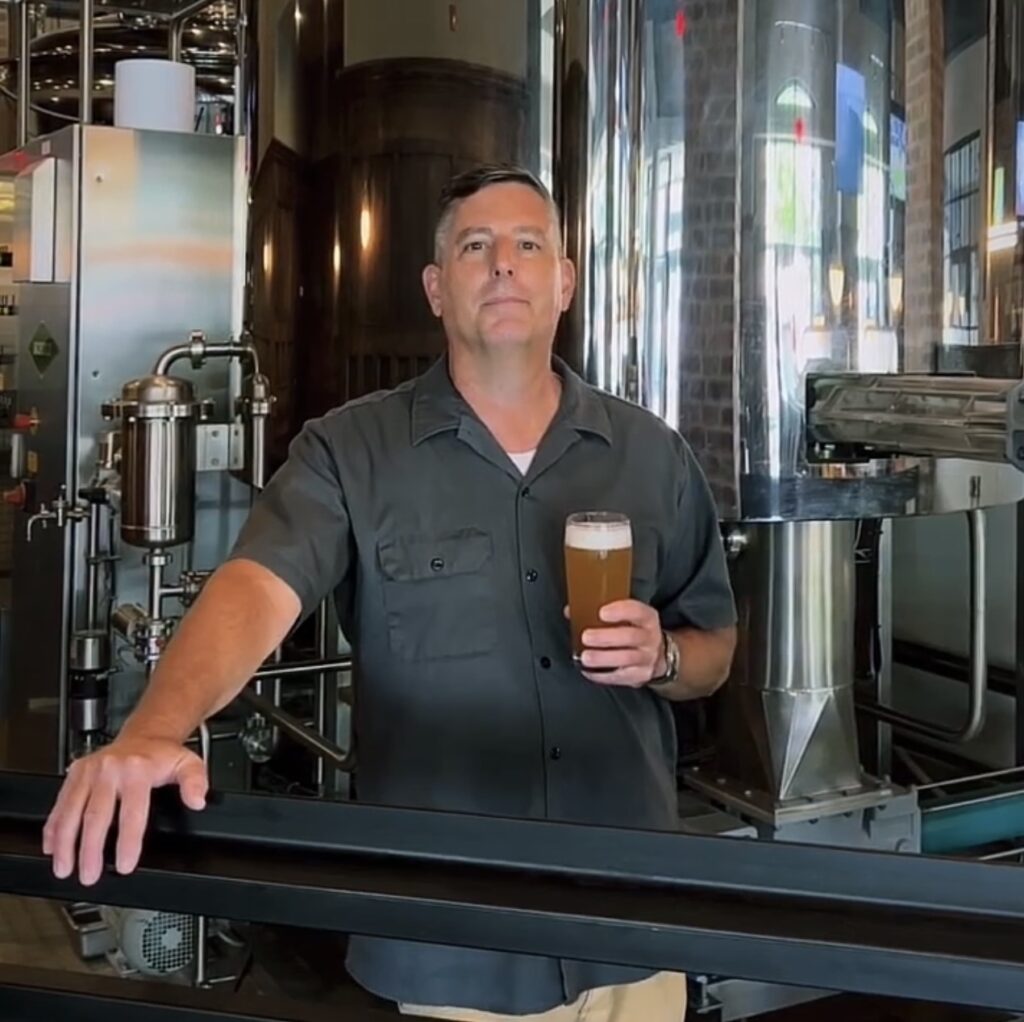
So with your background with a love of all things Germany and lagers, can you break down the history of Oktoberfest beers and the difference between Märzen vs. Festbier for us?
The way that I understand it, and this is from the brewers in Germany I know, is that Märzen came to be because they were making lager beer following the 1516 purity law called Reinheitsgebot (which limits limits German brewers to just four ingredients: malt, hops, yeast and water). There was a summer brewing prohibition put in place in Bavaria in 1553 because when they would brew when it was warm out, the beer was terrible. The lager yeast they were using, when mixed with the warmer fermentation process in the cellars, would create bacteria that would affect the beer. But brewing from September-March would help keep the bacteria down, and the king laid out a summer prohibition to keep it safe.
They would pack the beer they brewed in the winter and early spring down in snow and ice in caves during the summer and ration it out. Then, whatever was left in the cave come September, they could drink while they started brewing again. That “lagering” process allowed for more storage time and mellowed the beer out a bit, which made it taste better.
In 1810, the prince of Bavaria was getting married, and the big reception turned out to be the start of Oktoberfest because the whole city of Munich was involved. When the king is buying, you’d better drink up.
As for Oktoberfest, in 1810, the prince of Bavaria was getting married, and that was when the good stuff that had lagered in the caves all summer was brought out. The big reception turned out to be the start of Oktoberfest because the whole city of Munich was involved. When the king is buying, you’d better drink up. And everyone had such a good time, they decided to do it again the next year. It was the Märzen beer that started it all. There was a beer a long time before the festival.
Festbier is the lager you get in the tents during Oktoberfest in Munich. It’s more pale and light, almost like a helles or pilsner — and it turns out a very pragmatic move. As one of the brewers in Germany told me, “The lighter we make it, the more we can sell. It’s not a hobby, you know?”
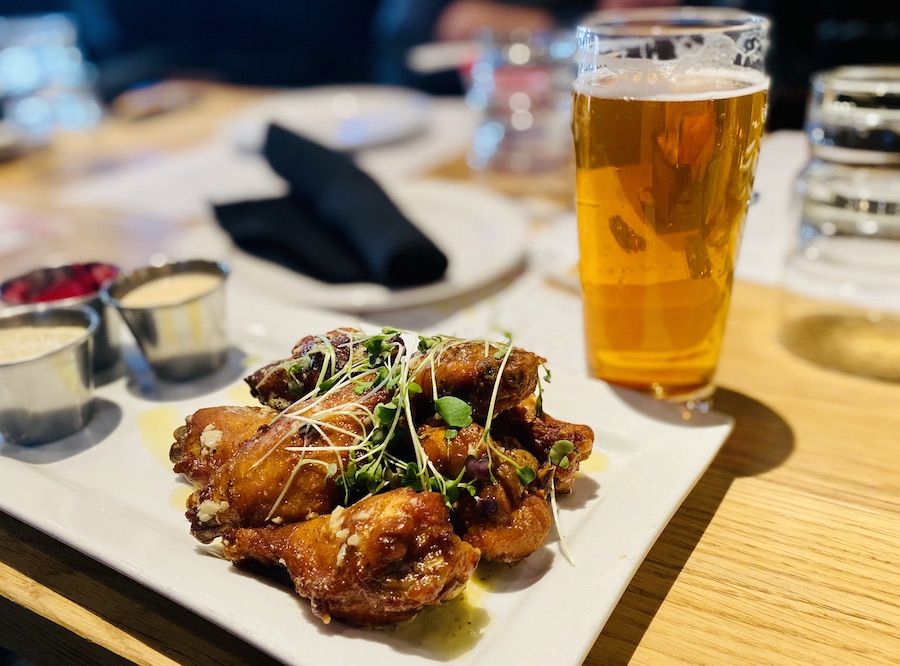
What do you have in line for an Oktoberfest beer at Crust?
Our Festbier came out out Sept. 1. It’s going to be a little bit in between a normal Festbier and the traditional Vienna lagers (like our Dough Roller at Crust) that are very closely related to Märzens and Oktoberfest. … When we were Hofbrauhaus, we had a traditional pale Festbier that was more European in style, but we wanted a little more color to push it toward the old-fashioned Märzen Oktoberfest. If you like Hacker Pschorr or the Hofbrauhaus Festbier, ours will be a very similar take but will be a bit deeper in color.
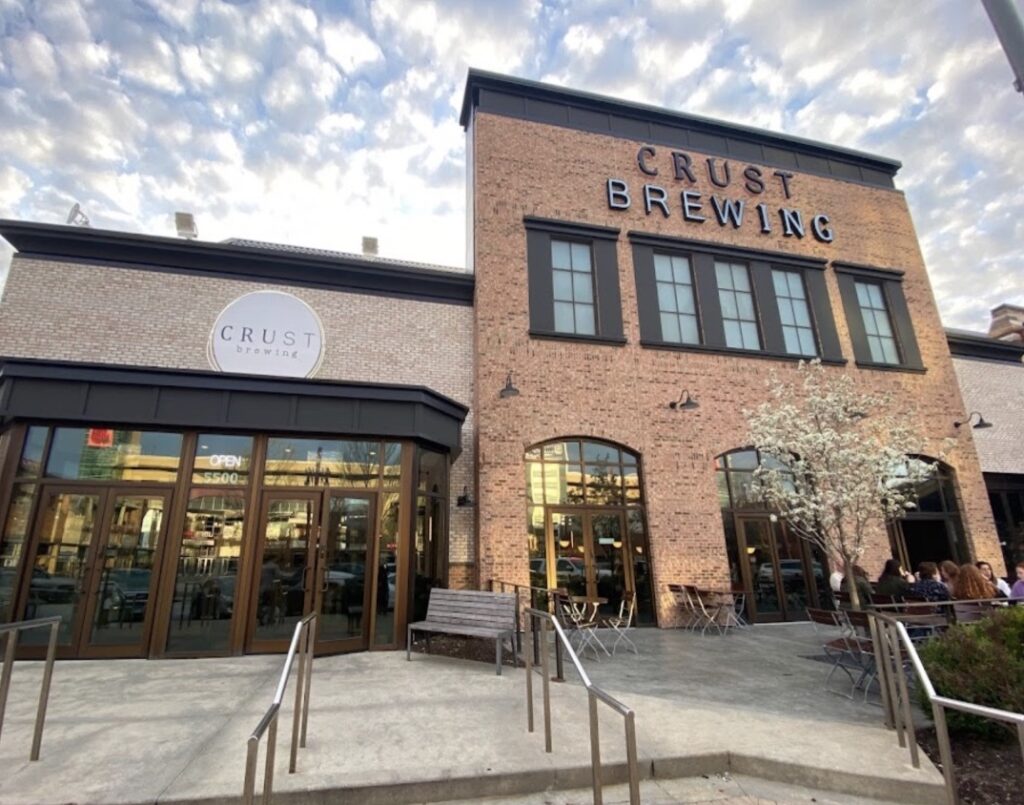
Q: You have to be proud of what you’ve built at Crust Brewing in a year and a half. The food, beer, venue and atmosphere are a big draw for Rosemont’s Parkway Bank Park.
A: When you’re in the on the planning, and part of the transition, and then seeing it through, it feels like five years (laughs). It’s funny, we’re all driven to do the best we can and we knew what we wanted to do, but we also knew it’s going to take awhile to figure things out, find out who are customers are going to be, what they want.
At least in the brewery, I feel like I have my feet on the ground now. … I’m a brewery geek, and it’s been a delightful struggle to make some new beers and vastly different beers that we think people want.
At least in the brewery, I feel like I have my feet on the ground now. I’ve been able to make the beers a few times and find out what works and what doesn’t. I’m a brewery geek, and it’s been a delightful struggle to make some new beers and vastly different beers that we think people want.
The brewery, being the former Hofbrauhaus, was designed to make German-style beers, lagers and hefeweizens. I feel like I was the lone holdout and finally got talked into making a hazy IPA called Hazed and Confused. I was a little unsettled doing it, but it’s wildly popular so we’re getting a lot of practice making that now. We’re less experimental than we were early on, and I like it that way.
We have a solid seven beers we have on now and sell a really nice mix of all of them. And a year and a half is pretty quick to get to the level where we are at. When you don’t have any more dogs in the tank that you can’t get rid of, it’s nice.
What do you have coming up down the road? Any fun new projects?
A: Something that we never did at Hofbrauhaus but we’re going to get into on a very small scale is barrel aging and setting up some special releases and fun stuff every once in a while. It’ll make for a nice revival of a type of beer that we can get in the wood barrels and let rest for a while. It should be nice to remind people about beers they liked and let them try a better version of it months later. We’ll start with the dark larger in September and get the process rolling this fall.
